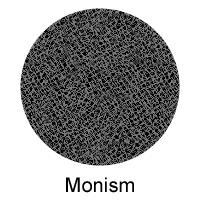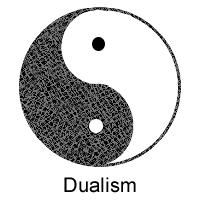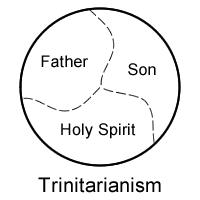Evaluating Eastern Religions
Most people in the world believe that when the world began, it was perfect. For the most part, humanity stands in agreement that something has gone terribly wrong, so that the world no longer exists in the perfect state it once enjoyed. We are thus in need of an accurate picture which encompasses both what went wrong in the world and how the problem is to be remedied.
Eastern religion teaches that the world will be restored to a state of perfection through perfect unity, thus the foundation of Eastern religion is the concept 'all is one'. The solution to the problem of the world as revealed in Scripture, however, is that God Himself enters into creation and becomes a part of it. Salvation is possible because of the death, burial, and resurrection of Jesus Christ. This seminar will explore how to share the truth of the Gospel with those who hold to the teachings of Eastern religion, by beginning with the common ground our worldview shares with their own.
1) Introduction



The three circles represent the three basic absolute world views. We will see that the second of these worldviews finds its logical ending in the first, thus leaving us with only two world views which are actually viable.
An absolute category is one which is large enough that all particulars fit inside it. Thus, these three circles are supposed to contain every aspect of life, because they are absolutes.
2) Absolute Truth
As Christians, we believe that there is Truth and that God has revealed it to us. Non-Christians, particularly those involved in New Age thought, find this deeply offensive. Believers are accused of arrogance for claiming that we have the Truth.
Those outside the faith often present truth as silent and passive, waiting to be discovered. The Bible is in sharp opposition to this concept! The first and central thing which we know about God is that He speaks and that His speech is truth. When we are empowered by the Holy Spirit, we are passive as the bride of Christ. The Holy Spirit leads us to Truth, writing it on our hearts.
3) What We Have In Common
People all over the world have very similar experiences. Everyone is aware of his or her own existence, as well as of a reality outside themselves. Most people in the world – in the whole history of the world – have believed that originally reality was perfect, and that something has gone terribly wrong so that it is not perfect now.
You do not have to have a long discussion with a person to discover that he or she believes that there is something wrong with the world, and that whatever that something is, it needs to be made right. The question thus arises: How can we have an accurate picture – an accurate worldview – within which we understand this state of things correctly?
Believers will recognise immediately that Christianity provides the answer both to what went wrong with the world as well as the answer to how the world is redeemed: God created the world and it was perfect. The perfect world was then destroyed by sin. We are now in need of a new heaven and a new earth.
In this basic structure of reality and history, we have communality with almost every other person in the world. Thus, there exists common ground to begin conversation with unbelievers. There is a shared experience which all of humanity has in common.
4) The First Circle
 Key Word: UNITY
Key Word: UNITY
The first circle is called monism or one-ism. The basic idea, which is the ground of the entire New Age movement, is that everything is one. This idea is very powerful and attractive, because if everything is one, then everyone is god. Within this worldview seems to be perfect peace and perfect unity. There is no conflict or disagreement – I cannot hate you when I am a part of you.
Hinduism and Buddhism’s doctrines of karma and reincarnation are necessary to support this basic doctrine of unity. Enlightenment is the realisation of oneness. There is a simple pattern, according to this worldview: originally everything is one, but we have entered into the illusion of diversity and relationships and must therefore be enlightened in order to return to the original unity and oneness.
In the first circle, when everything is one, hatred is evil. This sounds fine to us as Christians! However, love is equally evil. Why is this the case? Because one is the only good. Two is bad. Three is worse. Only one is good. In order to be enlightened, one has to stop hating – but he or she also has to stop loving, as well. You have to stop relating. Buddhists will never speak of the love of the Buddha. They will rather speak of the compassion of the Buddha. “Compassion” is a desire, a sympathy to help you toward oneness. But love is a recognition of who you are as an individual, thus it is not tolerated.
The first circle requires me to deny my experience of myself and to transcend. The Bible, however, says that I can come to Jesus just as I am. Totally: I bring my body, my mind, my emotions, my work, my creativity, and my uniqueness. I begin with the whole of who I am, and every aspect of my being is saved in Christ Jesus. In the first circle, I am required to abandon my body, my mind, my individuality, and my relationships. Though I believe the first circle to be a true absolute, I finally chose against it because it takes more faith to believe in this worldview than in the Bible. The Bible gives a true absolute.
5) The Second Circle
 Key Word: OPPOSITES
Key Word: OPPOSITES
The first circle has a certain logic behind it. People look around and see a very powerful unity in the world. There is one earth, one sky, one sun, one cycle of seasons, and so they see the power of this oneness and think, “one is good!” In the second circle, however, people see that the world consists of opposites. There exists hot and cold, soft and hard, sweet and bitter, male and female, kindness and cruelty, light and dark. The whole reality that we experience, according to this worldview, can be seen in terms of opposites. And so such people reason that original reality consisted of a series of perfectly balanced, equal opposites. The problems that we now have are thus because of imbalance. Thus, the solution is to find the balance again.
As an absolute, there are fundamental difficulties with this idea of dualism. Some things simply do not fit in the circle. What is the opposite of a river? Of history? Of time? The worldview is thus based on a strong idea, but it does not work because it does not apply to everything in life.
Philosophically, the second circle is finally the first circle, because as soon as dualism is absolutely stable and absolutely balanced and absolutely comprehensive then it is absolutely static. Static – still, without movement: as soon as there is no movement there is no reality of the relationship between opposites, leading you back to the first circle.
So, we are left with two circles: and one truth and one lie.
6) The Third Circle
 Key Words:
Key Words:
REVELATION and OBSERVATION
UNITY and DIVERSITY
The third circle is Trinitarianism. We come to our knowledge of reality in two ways. The first is through revelation: God reveals from the supernatural into the natural information about reality. And our observation of the reality around us confirms that revelation. The other direction from which we receive knowledge is by beginning with our observations of the natural reality around us, and then looking to the revelation from God to confirm and to correct our observations.
It is crucial that we retain both of the aspects. If we only have revelation and not observation, we end in transcendentalism and supernaturalism, with a Platonic understanding of reality. If we have observation but not revelation, then we end with naturalism, humanism, and natural theology. We are thus isolated and have only half of reality.
The third circle is Father, Son, and Holy Ghost. When we look around us, we do in fact see a very strong unity like the people in the first circle see. But we see an equally strong diversity! In the first circle, individuals decide that unity is true and diversity is false. We find from God’s revelation, however, that outside of space and time there is one God who is three Persons. The God of the Bible is perfectly unified and perfectly diversified. Thus, the one who lives in the biblical truth receives unity as good and diversity as good.
In the third circle, the nature of relationships according to God’s reality is complementary. There is not a conflict between form and freedom: there is a complementarity.
7) Conclusion
In the first circle, the problem is viewed as being diversity. In the second circle, the problem is seen as being imbalance. In the third circle, the original reality is a perfect and total other-centeredness.
The solution to the problem of the world as revealed in Scripture is that God Himself enters into the creation and becomes a part of it. Because He is both fully God and fully man, he has the power to perform an act that is so totally and completely other-centered that it provides the basis and power for anyone who accepts and believes in this act to become a new person, to be born again with another-centered identity. And that is salvation in the third circle. This act, of course, is the Crucifixion. Because of the Crucifixion, this totally other-centered act, death is swallowed up in victory. And we have the power to become sons of God and to be completely reoriented from our sinful, self-centered death to other-centered life.



